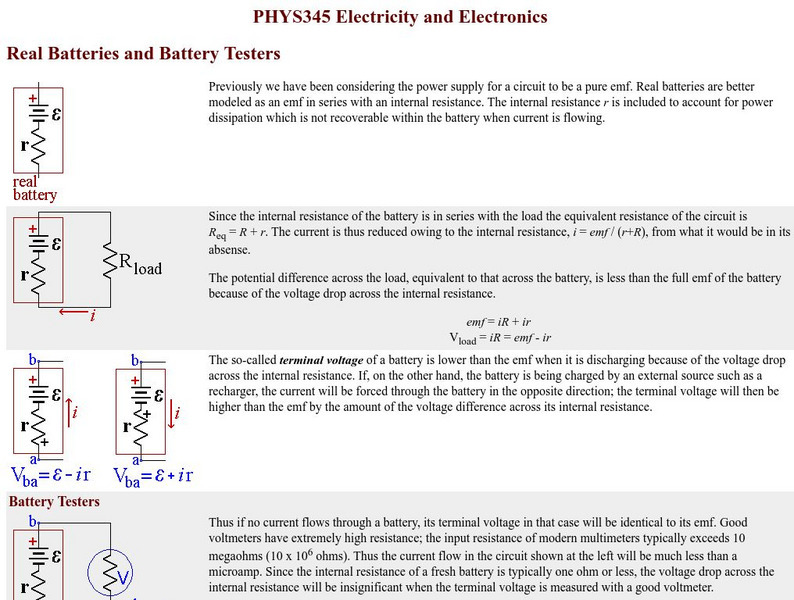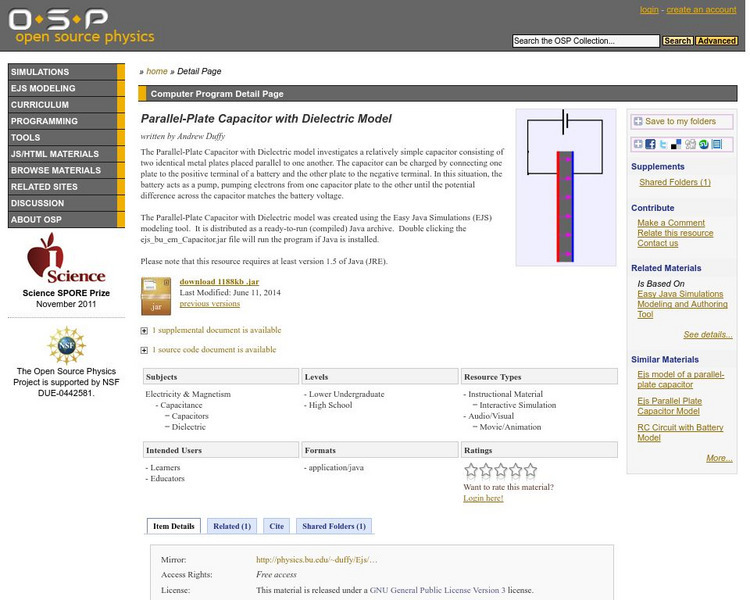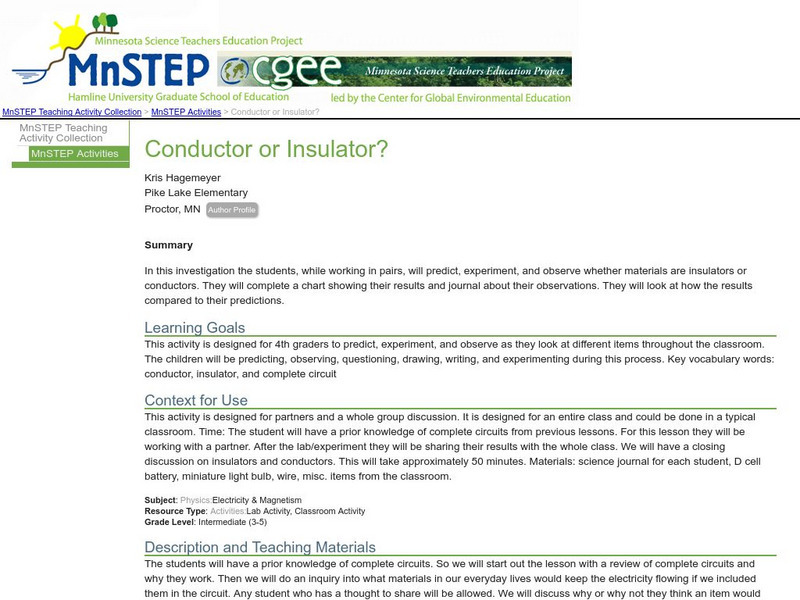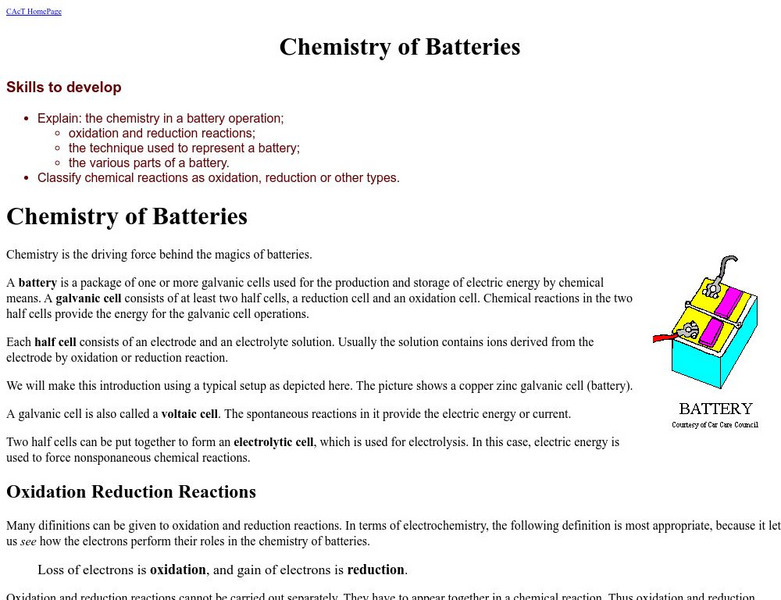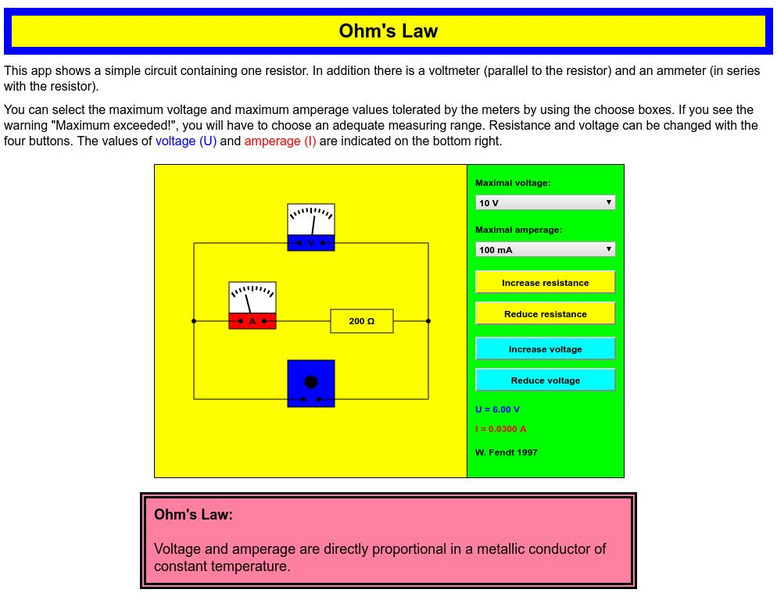Hi, what do you want to do?
Hunkins Experiments
Hunkin's Experiments: How to Make Oxygen From a Battery
Hunkin's Experiments is a group of simple cartoon illustrations of scientific principles. Some would work well in the classroom, but others have little value beyond entertaining students. All of the projects are easy to do. This one...
Science Struck
Science Struck: Lemon Battery Experiment
In this step-by-step experiment, you will learn how to make a battery using four lemons and use it to light an LED bulb.
Other
Univ.of Delaware: Real Batteries and Battery Testers
A discussion of various principles related to voltage. The operation of battery testers and voltmeters are explained. The importance of the internal resistance of a power source is discussed.
TeachEngineering
Teach Engineering: The Power of Food
Students imagine they are stranded on an island and must create the brightest light possible with the meager supplies they have on hand in order to gain the attention of a rescue airplane.
Nobel Media AB
The Nobel Prize: The Nobel Prize in Physics 1905
This Nobel E-Museum website commemorates the work of Philipp von Lenard and his Nobel prize achievement. This detailed resource includes a biography, Lenard's Nobel Lecture, and the "The Nobel Prize in Physics 1905 Presentation Speech."
American Association of Physics Teachers
Com Padre Digital Library: Open Source Physics: Faraday Disk Dynamo Model
This simulation demonstrates a rotating conducting disk in a magnetic field which produces a current or a self-exciting dynamo.
Physics Aviary
Physics Aviary: Practice Problems: Rl in Ac Problem
Determine the rms current and voltage in an RL circuit powered by an AC power supply.
Physics Aviary
Physics Aviary: Practice Problems: Rlc in Ac Problem
Determine the rms current and voltage in an RLC circuit powered by an AC power supply.
National High Magnetic Field Laboratory
Magnet Academy: Inductive Reactance
Like resistance, reactance slows an electrical current down. Explained by Lenz's Law, this phenomenon occurs only in AC circuits. (Java tutorial)
Concord Consortium
Concord Consortium: Measuring Voltage on a Breadboard
Find out how measuring voltage in a circuit is like measuring the pressure in a water pipe.
Concord Consortium
Concord Consortium: Total Resistance for Resistors in Series
Use the tutorial to find the total resistance for resistors in a series circuit.
American Association of Physics Teachers
Com Padre Digital Library: Open Source Physics: Parallel Plate Capacitor
A simulation investigating a parallel-plate capacitor which is charged by connecting one plate to the positive end of a battery, and the other plate to the negative end. The battery sends electrons from one capacitor plate to the other...
Science Education Resource Center at Carleton College
Serc: Conductor or Insulator?
For this investigation the students predict, experiment, and observe whether materials are insulators or conductors.
E-learning for Kids
E Learning for Kids: Science: Arctic Ocean: What Are Conductors and Insulators?
Visit Vlad and learn about the properties of conductors and insulators, and what materials are used for them.
CK-12 Foundation
Ck 12: Physical Science: Thermal Conductors and Insulators
[Free Registration/Login may be required to access all resource tools.] Thermal conductors and insulators and the ways they are used.
University of Waterloo (Canada)
Computer Assisted Chem. Tutorial/chemistry of Batteries
A superb explanation of how a battery works. Discusses the associated chemistry which explains how a battery produces a voltage. Includes a series of "Confidence Building Questions."
Science Education Resource Center at Carleton College
Serc: Modeling Emf, Potential Difference, and Internal Resistance
Interactive lecture discusses internal resistance which provides help to students in developing an accurate model.
CK-12 Foundation
Ck 12: Fourth Grade Science
This customizable digital textbook covers topics related to fourth-grade science. It is Next Generation Science Standards (NGSS) aligned.
Science4Fun
Science4 Fun: Conductors and Insulators
Discover what materials make good conductors and insulators.
Khan Academy
Khan Academy: Kirchhoff's Junction Rule Review
Review the key terms and skills related to Kirchhoff's junction rule.
Walter Fendt
Walter Fendt: Apps Zur Physik
This site, in German, offers numerous apps that illustrate common physics principles. Apps are organized into categories: mechanics, oscillations and waves, electrodynamics, optics, thermodynamics, the theory of relativity, physics of...
Oswego City School District
Regents Exam Prep Center: Kirchhoff's Second Law
This site provides a small definition of Kirchhoff's Second Law as well as illustrations & animations that show how this law works.







